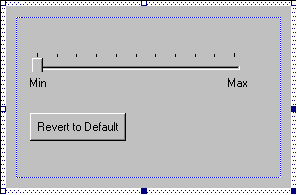
| Microsoft DirectX 9.0 |
At this point the filter supports everything that it needs for a property page. The next step is implementing the property page itself. Start by deriving a new class from CBasePropertyPage. The following example shows part of the declaration, including some private member variables that will be used later in the example:
class CGrayProp : public CBasePropertyPage
{
private:
ISaturation *m_pGray; // Pointer to the filter's custom interface.
long m_lVal // Store the old value, so we can revert.
long m_lNewVal; // New value.
public:
/* ... */
};
Next, create a dialog resource in the resource editor, along with a string resource for the dialog title. The string will appear in the tab for the property page. The two resource IDs are arguments to the CBasePropertyPage constructor:
CGrayProp::CGrayProp(IUnknown *pUnk) :
CBasePropertyPage(NAME("GrayProp"), pUnk, IDD_PROPPAGE, IDS_PROPPAGE_TITLE),
m_pGray(0)
{ }
The following illustration shows the dialog resource for the example property page.

Now you are ready to implement the property page. Here are the methods in CBasePropertyPage to override:
The remainder of this tutorial describes each of these methods.